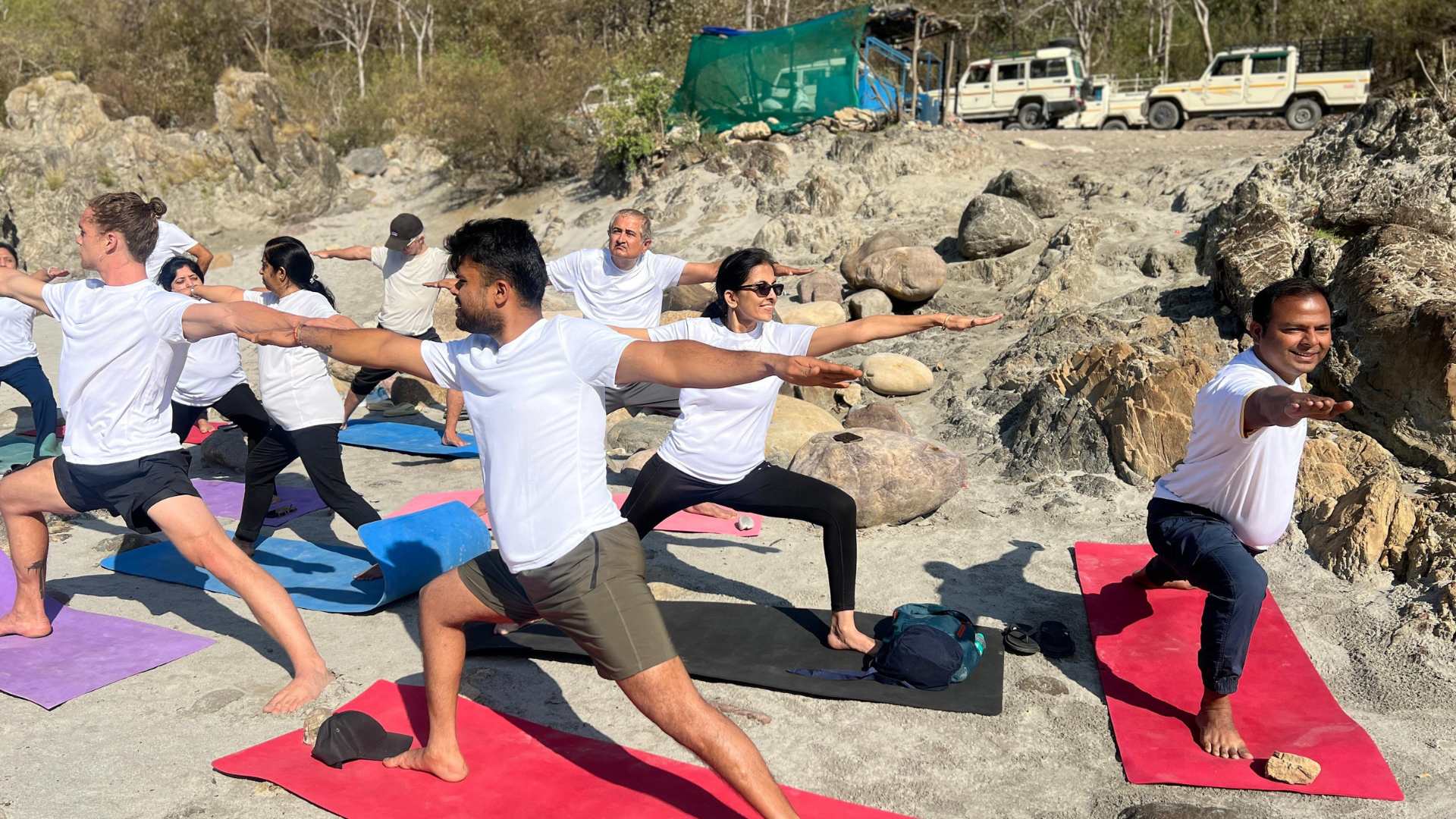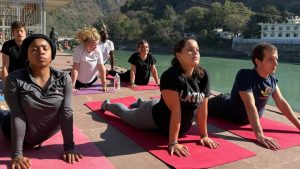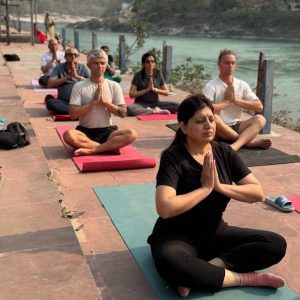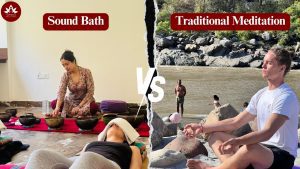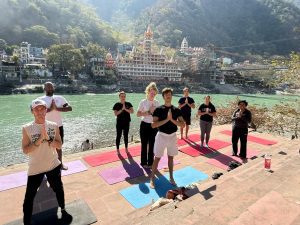Yoga, an ancient practice rooted in Indian philosophy, has evolved into various styles that cater to different needs, goals, and personalities. Among these, Hatha Yoga and Ashtanga Yoga stand out as two of the most popular and transformative disciplines. Both share a common foundation yet diverge significantly in their methods, pace, and overall experience.
Whether you seek a gentle, grounding journey or an energetic, structured practice, understanding the essence of each will help you determine which aligns best with your mind and body.
What Is Hatha Yoga?
Hatha Yoga is often described as the foundation of all physical yoga practices. The word “Hatha” comes from two Sanskrit roots: Ha, meaning “sun” and Tha, meaning “moon,” symbolizing the union of opposites. Hatha Yoga aims to bring balance between body and mind through asanas (postures), pranayama (breath control), and dhyana (meditation).
It’s a slower-paced practice, focusing on alignment, mindful breathing, and holding poses for longer durations. Traditionally, Hatha Yoga serves as a preparatory stage for deeper spiritual practices, helping practitioners purify the body and calm the mind before meditation.

What Is Ashtanga Yoga?
Ashtanga Yoga, founded by Sri K. Pattabhi Jois, is a dynamic and disciplined practice rooted in the ancient text Yoga Korunta. The term “Ashtanga” means “eight limbs,” referring to the path outlined by sage Patanjali in the Yoga Sutras. These eight limbs include ethical principles, physical postures, breath control, sense withdrawal, concentration, meditation, and ultimately, enlightenment.
Ashtanga Yoga follows a fixed sequence of postures performed in a flowing, synchronized rhythm with the breath that is known as Vinyasa. Each movement is linked to inhalation or exhalation, creating a meditative flow that builds strength, endurance, and focus.
Differences Between Hatha Yoga and Ashtanga Yoga
While both styles share the goal of harmonizing body, mind, and spirit, their approaches vary significantly. Below is a detailed comparison of Hatha vs. Ashtanga Yoga across essential aspects:
| Aspect | Hatha Yoga | Ashtanga Yoga |
| Pace | Slow and gentle | Fast and vigorous |
| Sequence | Flexible and varied | Fixed and structured |
| Focus | Alignment, relaxation, and mindfulness | Strength, stamina, and discipline |
| Suitable For | Beginners and those seeking calmness | Intermediate to advanced practitioners |
| Breathing | Deep, slow breathing | Ujjayi (victorious breath) synchronized with movement |
| Goal | Balance and inner peace | Physical mastery and mental focus |
| Environment | Calming and restorative | Intense and energetic |
[At Saptkaya Yoga School, our yoga retreats in Rishikesh offer students the opportunity to explore both Hatha and Ashtanga Yoga under expert guidance, allowing them to experience the harmonious contrast of stillness and movement, yin and yang, throughout their journey.]
Hatha Yoga: Path of Balance and Stillness
Hatha Yoga is ideal for those who wish to slow down and reconnect with their inner rhythm. The practice emphasizes gentle stretching, breath awareness, and mindful transitions between poses. Each asana is held for several breaths, allowing time to explore alignment and sensations within the body.
A typical Hatha class might include:
- Pranayama (Breathing Techniques) such as Anulom Vilom or Bhramari
- Foundational Asanas like Tadasana (Mountain Pose), Bhujangasana (Cobra Pose), and Trikonasana (Triangle Pose)
- Meditation or Relaxation through Savasana (Corpse Pose)
This approach nurtures mental clarity, flexibility, and stress relief, making it suitable for beginners, seniors, and anyone recovering from fatigue or injury. The slower pace encourages mindfulness, inviting practitioners to listen deeply to their bodies.
Note: During our Yoga and Ayurveda Retreats at Saptkaya Yoga School, Hatha Yoga sessions are complemented by sound healing, meditation, and sattvic meals, ensuring that your practice nourishes both the body and spirit.

Ashtanga Yoga: Path of Power and Discipline
Ashtanga Yoga, on the other hand, is a physically demanding and structured practice designed to build internal heat, detoxify the body, and cultivate discipline. Each class follows a specific set series of postures: the Primary Series (Yoga Chikitsa), Intermediate Series (Nadi Shodhana), and Advanced Series (Sthira Bhaga), progressing in difficulty and complexity.
The hallmark of Ashtanga lies in the Vinyasa system, where movement and breath merge seamlessly. The continuous flow between poses promotes endurance and focus while improving cardiovascular strength, balance, and flexibility.
A typical Ashtanga session includes:
- Sun Salutations (Surya Namaskar A & B) to warm up the body
- Standing and Seated Postures with flowing transitions
- Backbends, Inversions, and Finishing Poses for deep integration
Ashtanga Yoga is ideal for those who thrive on structure, repetition, and challenge. It attracts practitioners who appreciate consistency and seek to transform their practice into a form of moving meditation.
Note: During our retreats at Saptkaya Yoga School in Rishikesh, participants experience the true essence of Ashtanga Yoga in the spiritual heart of the Himalayas, surrounded by the serene energy of the Ganges.
Guided by experienced teachers, each session blends traditional postures with the deeper philosophy and discipline that define this ancient yogic practice.
Which Practice Is Better for You?
Choosing between Hatha Yoga and Ashtanga Yoga depends on your personal goals, energy level, and lifestyle.
Choose Hatha Yoga If You:
- Are a beginner or new to yoga
- Prefer a gentle, meditative approach
- Seek to improve flexibility and relaxation
- Wish to balance your energy and reduce stress
- Want to prepare for meditation and pranayama
Choose Ashtanga Yoga If You:
- Have prior experience in yoga or fitness
- Enjoy structured, high-energy routines
- Aim to build strength, stamina, and focus
- Appreciate the discipline of a fixed sequence
- Are drawn to dynamic, goal-oriented practice
Both paths can lead to profound transformation physically, mentally, and spiritually. Many practitioners begin with Hatha Yoga to build awareness and gradually progress into Ashtanga as their endurance and confidence grow.
Why Practice Yoga in Rishikesh with Saptkaya Yoga School
Practicing yoga in Rishikesh, known as the Yoga Capital of the World, is a sacred experience in itself. The energy of the Ganges, the serene Himalayan backdrop, and the ancient spiritual vibrations create a powerful environment for self-transformation.
At Saptkaya Yoga School, we combine this sacred atmosphere with authentic teachings, experienced instructors, and personalized care. Whether you choose a 4-day or 7-day Yoga and Panchakarma Retreat, Yoga and Sightseeing Retreat, or a Yoga and Sound Healing Retreat, each session is designed to help you reconnect with your inner self and understand yoga as a way of life.
Common Goal: Union of Body, Mind, and Spirit
Despite their differences, both Hatha and Ashtanga Yoga share the same philosophical foundation, the pursuit of unity (yoga). Both integrate breath, movement, and awareness, leading to a deeper understanding of the self.
- Hatha Yoga helps you slow down, turn inward, and restore balance.
- Ashtanga Yoga pushes you to move with intention, overcome limits, and awaken inner strength.
Ultimately, the best yoga practice is the one that you can sustain with joy, dedication, and mindfulness.
Related Articles:
Why Travelers Worldwide Love Our Yoga Retreat in Rishikesh
What Makes Our 7 Days Yoga Retreat in Rishikesh So Special?
Is a Yoga Meditation Retreat Right for You?

Integrating Both Styles in Your Practice
Many modern practitioners find value in combining both styles. You can start your week with Hatha sessions for grounding and reflection, then integrate Ashtanga classes for energy and stamina. This balanced approach allows you to experience the perfect harmony of strength and serenity, blending dynamic effort with mindful ease.
Final Thoughts
Whether you are drawn to the slow rhythm of Hatha Yoga or the intense flow of Ashtanga Yoga, both paths offer remarkable benefits for holistic well-being. They remind us that yoga is not merely about flexibility or fitness, but about cultivating awareness, harmony, and inner peace.
At Saptkaya Yoga School in Rishikesh, we honor both traditions, guiding students through authentic practices rooted in ancient wisdom. By exploring these forms mindfully, you can discover which path resonates most deeply with your body and spirit.

